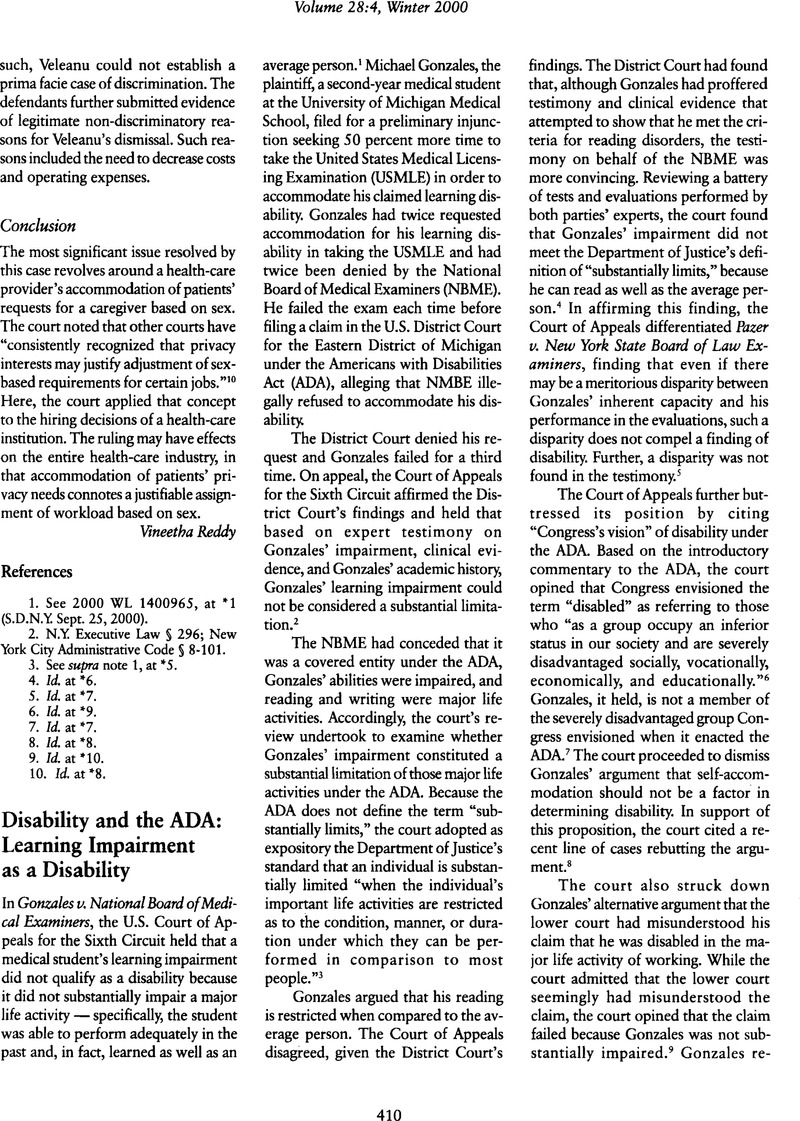Gonzales,
2000 U.S. App. LEXIS 21128, at
*24. The lower court had also held that Gonzales' contention that the application of the term “substantially limits” should be read in comparison to an individual at his age level, i.e., a comparison to college-level students was erroneous.
Id. The lower court held that the correct standard was to compare the impairment to pooled norms; it found that under the proper comparison Gonzales' scores “are squarely in the average to superior range.”
Gonzales v. National Board of Medical Examiners, 60 F. Supp. 2d 703, 708 (1999). The Court of Appeals reiterated this view in reviewing the testimony and agreed with the conclusions of the lower court. See
Gonzales, 2000 U.S. App. LEXIS 21128, at
*24.
Google Scholar 
